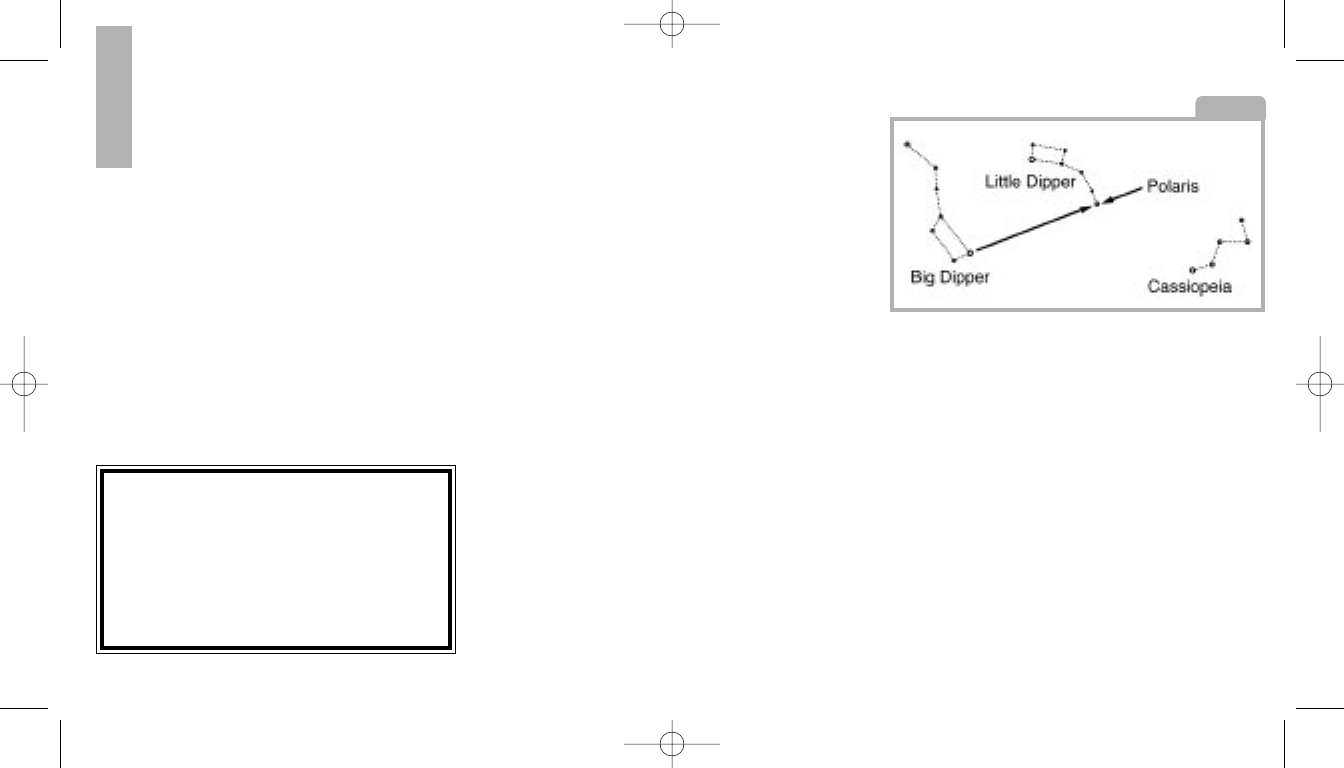
complete revolution about the pole,
circling with the pole at the center.
By lining up the telescope's polar
axis with the North Celestial Pole (or
for observers located in Earth's
Southern Hemisphere with the South
Celestial Pole), astronomical objects may
be followed, or "tracked," by moving the
telescope about one axis, the polar axis.
If the telescope is reasonably well aligned
with the pole very little use of the
telescope's Declination flexible cable
control is necessary. Virtually all of the
required telescope tracking will be in
Right Ascension. For the purposes of
casual visual telescopic observations,
lining up the telescope's polar axis to
within a degree or two of the pole is more
than sufficient: with this level of pointing
accuracy, the telescope can track accurately
by slowly turning the telescope's R.A.
flexible cable control and keep objects
in the telescopic field of view for perhaps
20 to 30 minutes.
POLAR ALIGNMENT OF THE EQUATORIAL
MOUNT
To line up the Polaris 114 EQ-AR with the
pole, follow this procedure:
1. Release the Azimuth lock (30) of the
Azimuth base, so that the entire telescope-
with-mounting may be rotated in a
horizontal direction. Rotate the telescope
until it points due North. Use a compass or
locate Polaris, the North Star, as an
accurate reference to North (See Fig. 7).
2. Level the mount with the horizon, if
necessary, by adjusting the heights of the
three tripod legs.
3. Determine the latitude of your observing
location by checking a road map or atlas.
Release the latitude lock (9) and tilt the
telescope mount so that the star "Polaris" is
centered in the telescope's viewfinder
eyepiece, then re-tighten the latitude lock.
4. If the above steps (1-3) were performed
with reasonable accuracy, your telescope is
now sufficiently well-aligned to the North
Celestial Pole for visual observations.
Once the mount has been polar-aligned as
described above, the latitude angle need not
be adjusted again, unless you move to a
different geographical location (i.e. a
different latitude). The only polar alignment
procedure that you need to perform each
time you use the telescope is to point
the polar axis due North, as described in
step 1 above.
THE MEADE 4M COMMUNITY
You haven’t just bought a telescope, you have embarked
on an astronomy adventure that never ends. Share the
journey with others by accepting your free membership
in the 4M community of astronomers.
Go to www.Meade4M.com
to activate your membership today.
8
Fig. 7
Meade80EQ-AR 4/28/06 9:55 AM Page 10


















